In September 2023 we went to the Battle of Britain Airshow at Duxford.
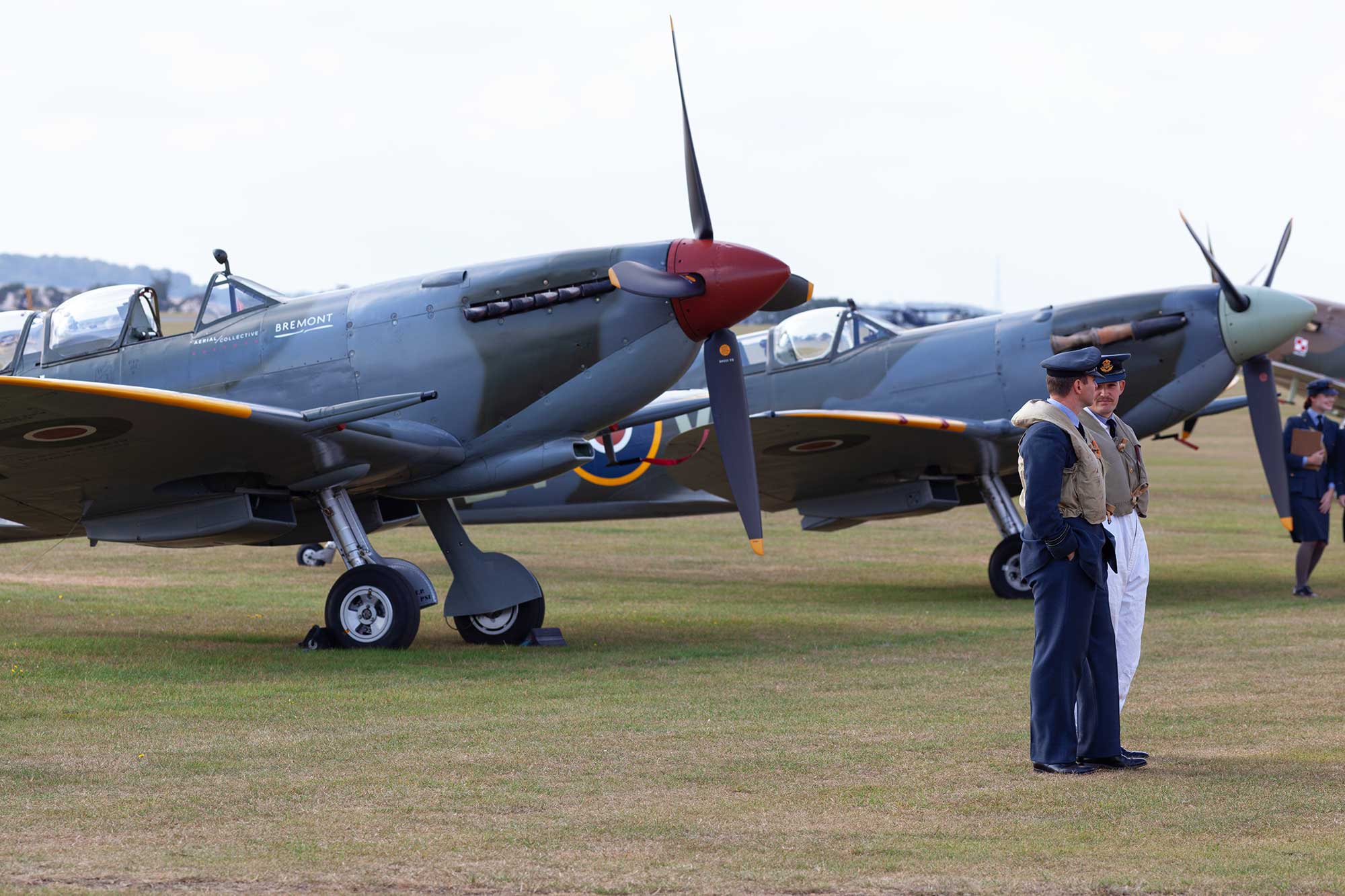
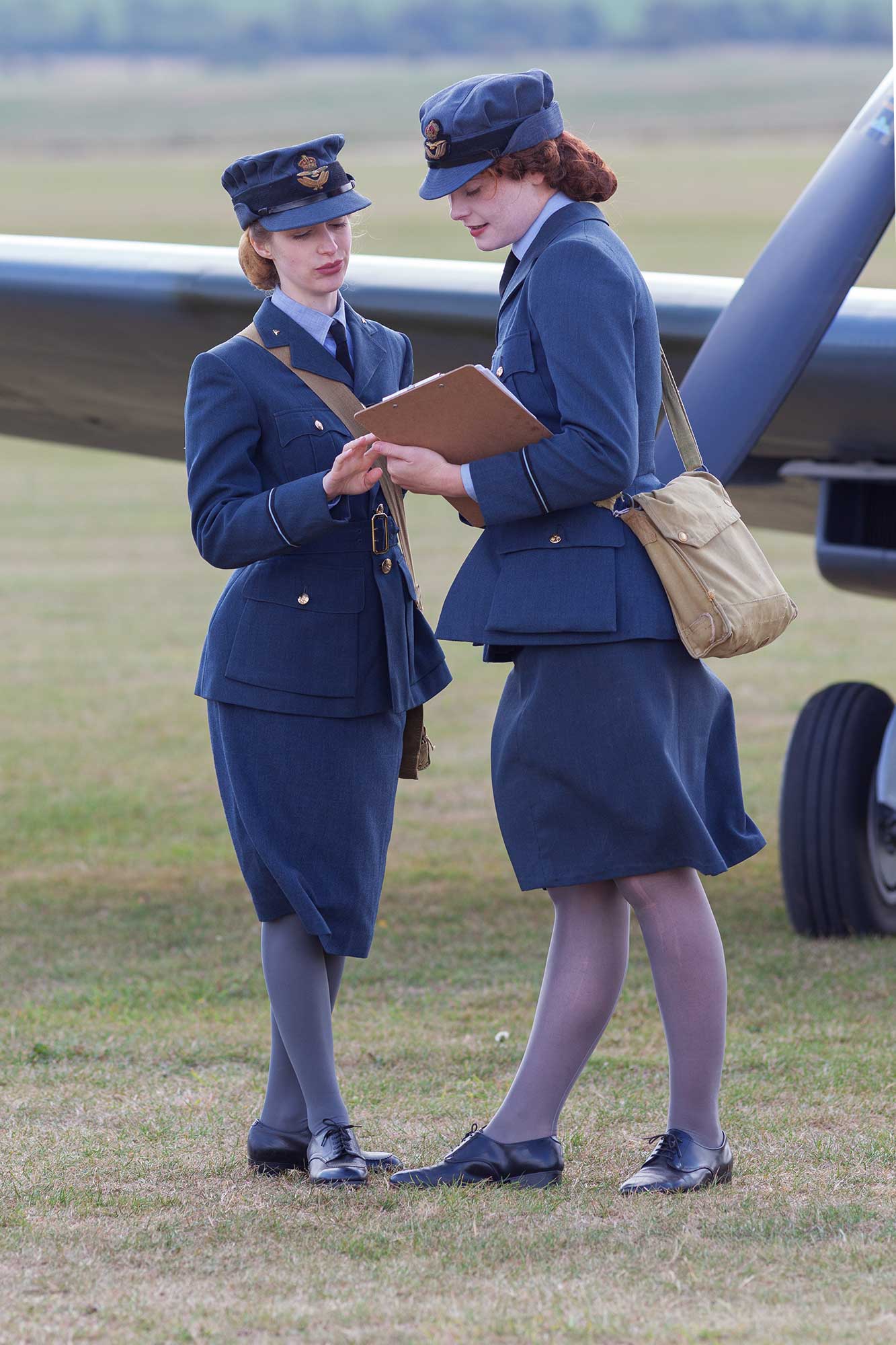
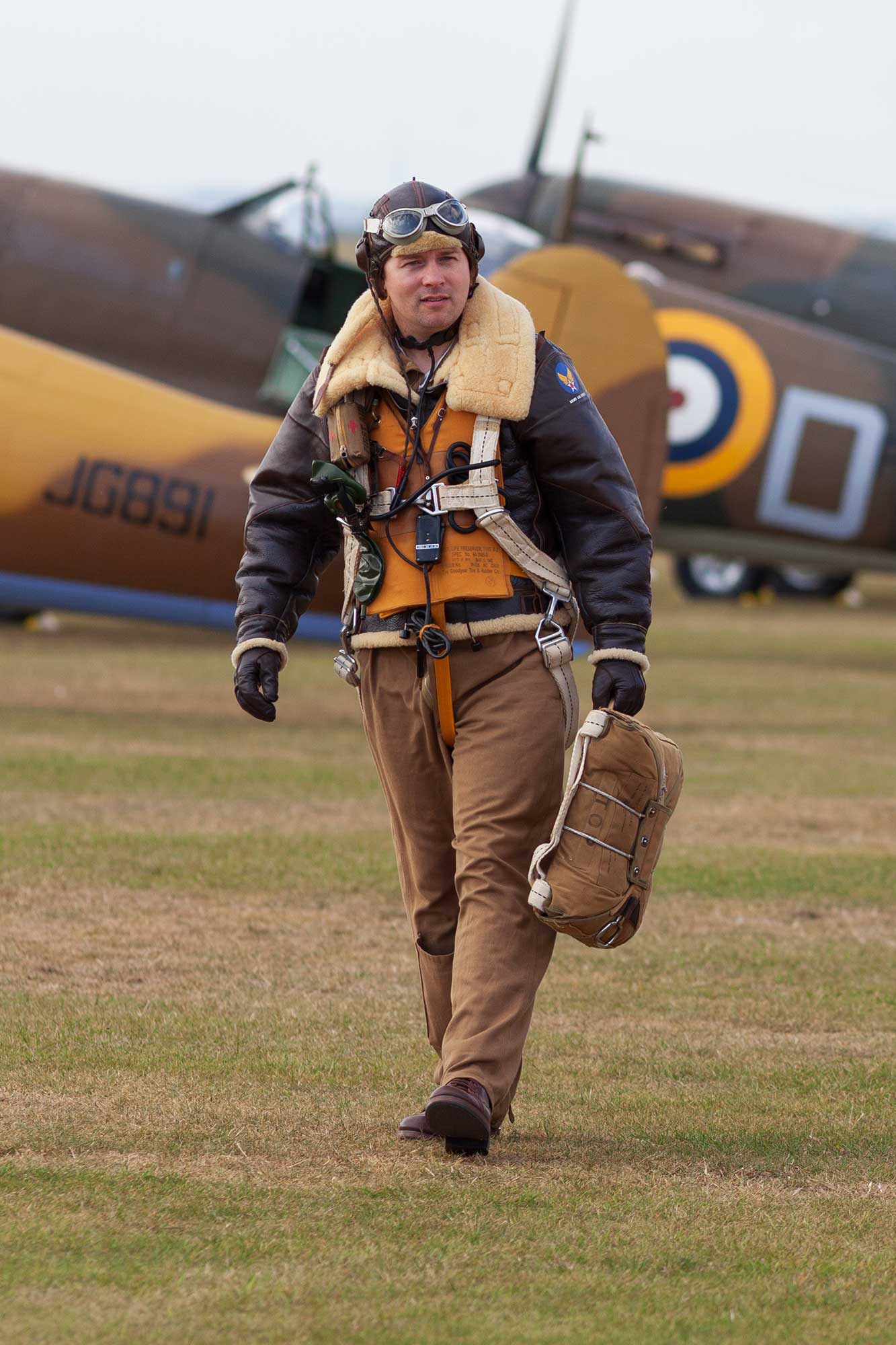
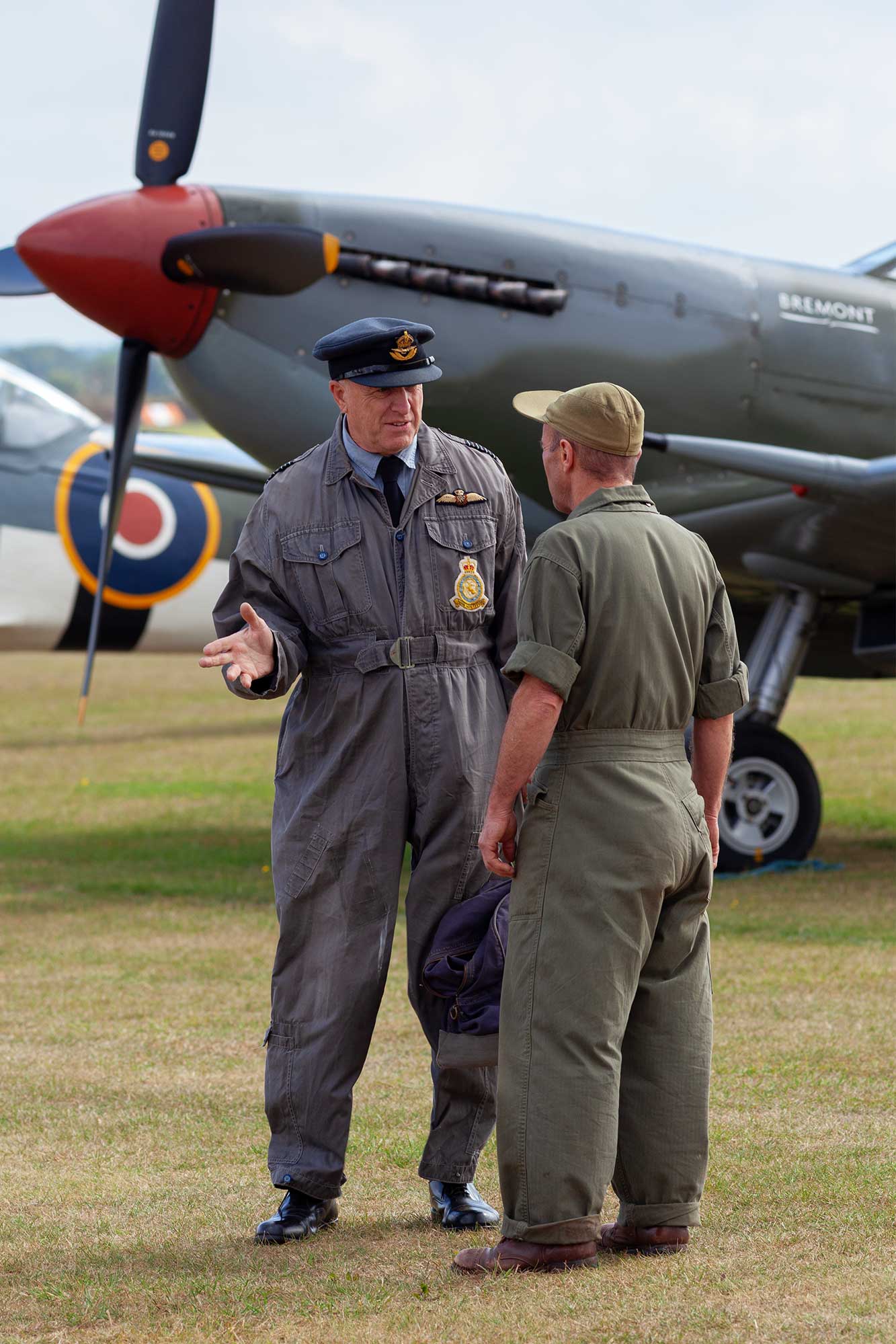
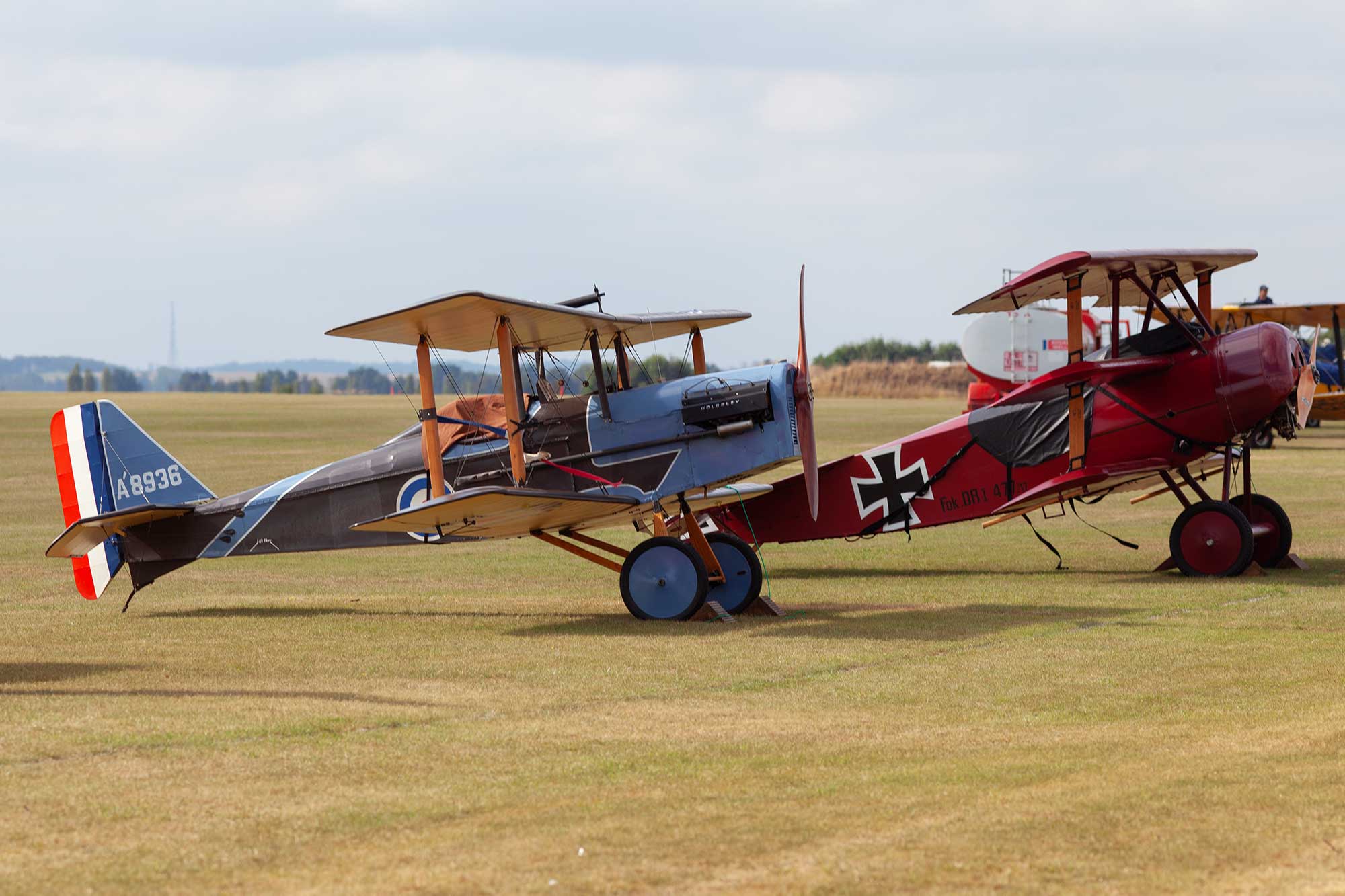
(Photo Above) - On the left is a Royal Aircraft Factory SE5a and on the right is a Fokker Dr1 Triplane
Introduced into service in mid-1917, the Royal Aircraft Factory SE5a was the Factory's most successful aircraft. It was faster than any contemporary German type and could be dived at high speed without the wings falling off! The SE5a was armed with a Vickers machine-gun on top of the fuselage, and a Lewis machine-gun on the top wing, mounted so as to allow the pilot to fire upwards if necessary. It was the chosen aircraft of many Allied air aces.
The Fokker Dr1 is probably the most famous fighter of the First World War, largely because of its association with the legendary Baron Manfred von Richtofen. It was an unashamed copy of the British Sopwith Triplane and entered service in August 1917. It was tricky to fly, being inherently unstable. It had mediocre performance (it's top speed at sea level was only 115 mph) and a very short range, but it had two great advantages in a dogfight: it could climb faster than many of its more powerful opponents and, crucially, it could turn inside them.
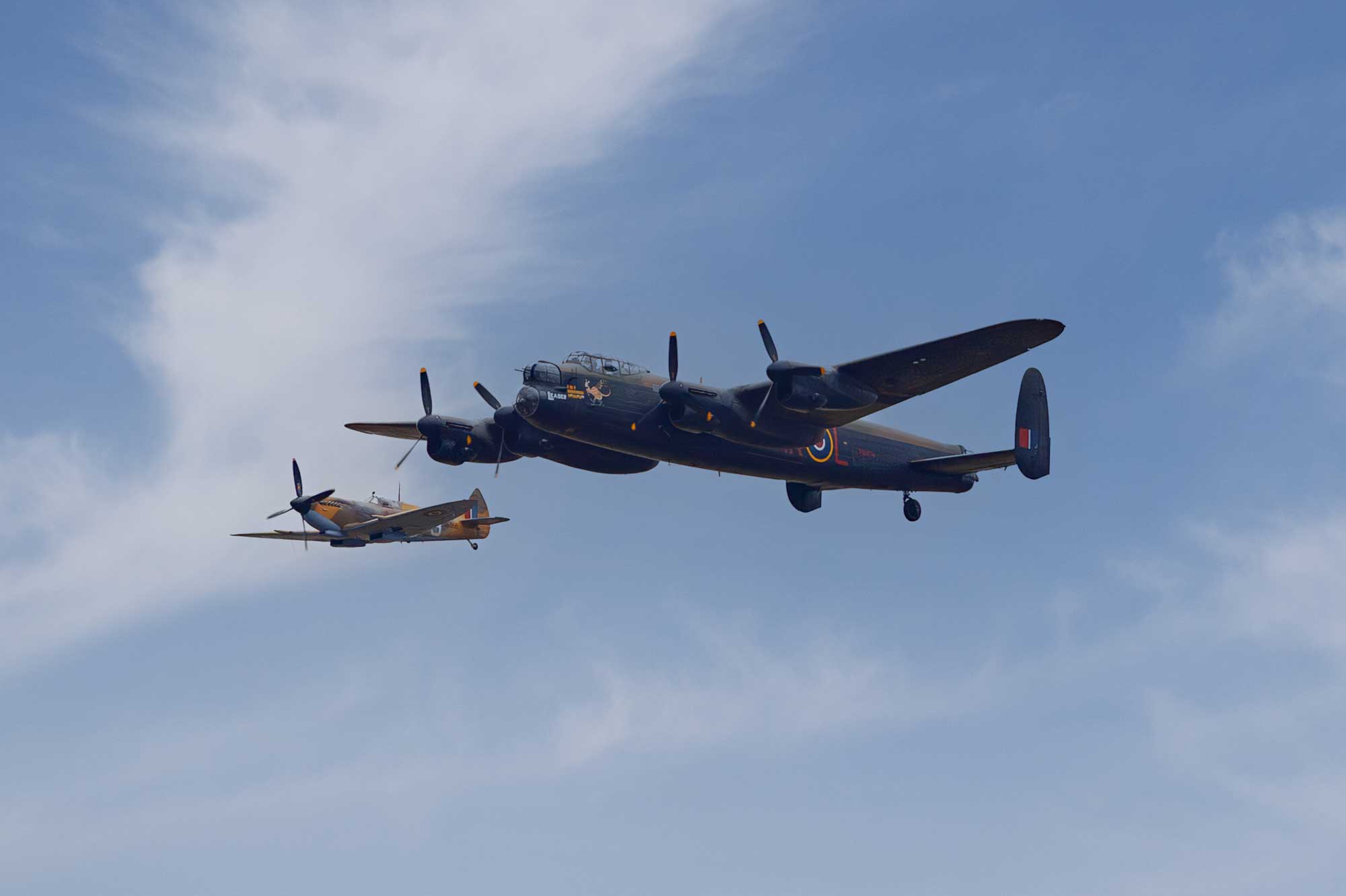
(Photo Above) - An Avro Lancaster B1 with a Supermarine Spitfire to it's right-hand side.

(Photo Above) - The Spitfire and Lancaster are now with a Hawker Hurricane.
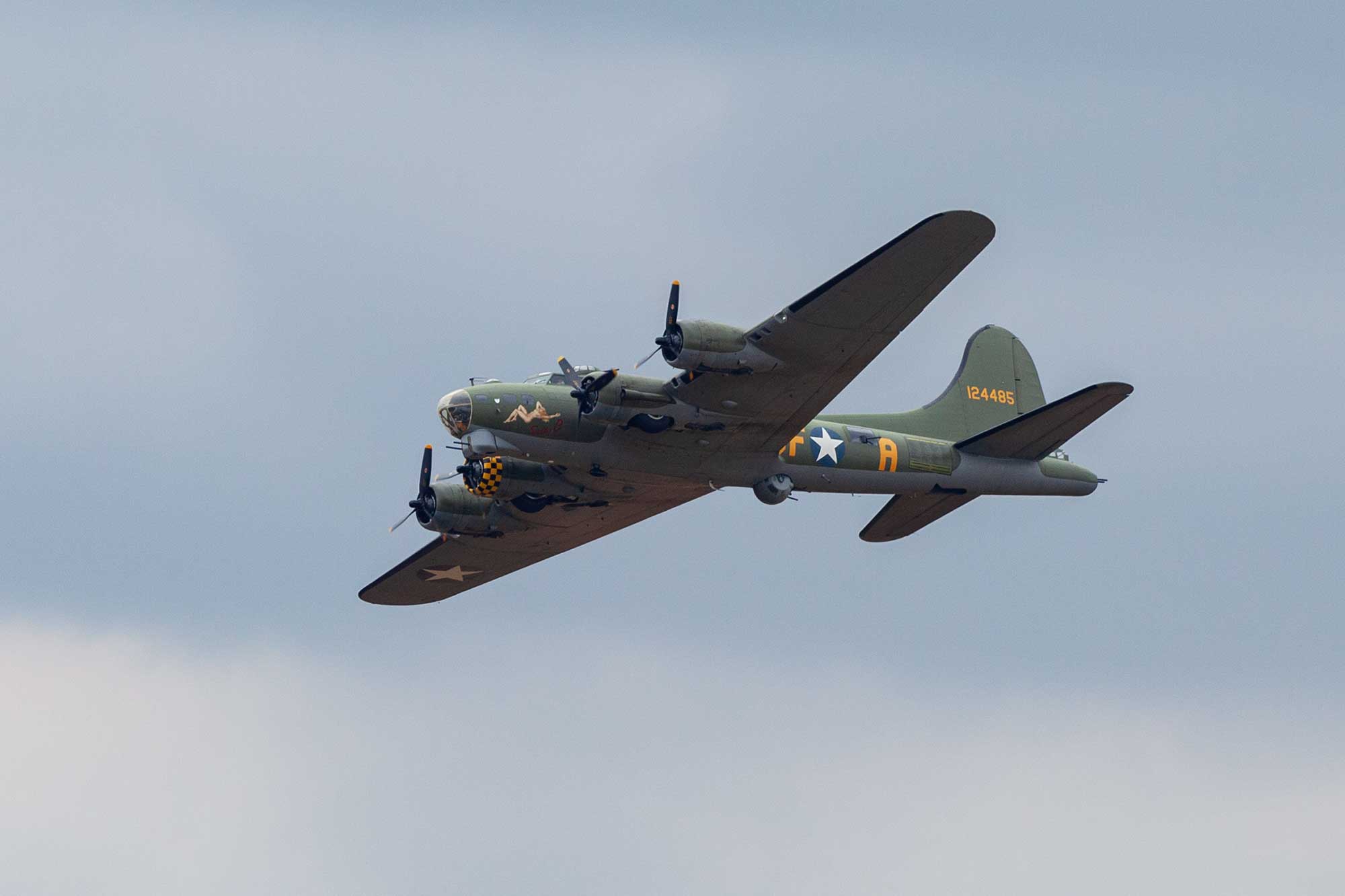
(Photo Above) - This is a Boeing B-17 Flying Fortress named "Sally B".
It is Europe's last airworthy B-17. It was built too just too late to see service in the Second World War and instead spent 30 years as a research and survey aircraft in the United States and France.

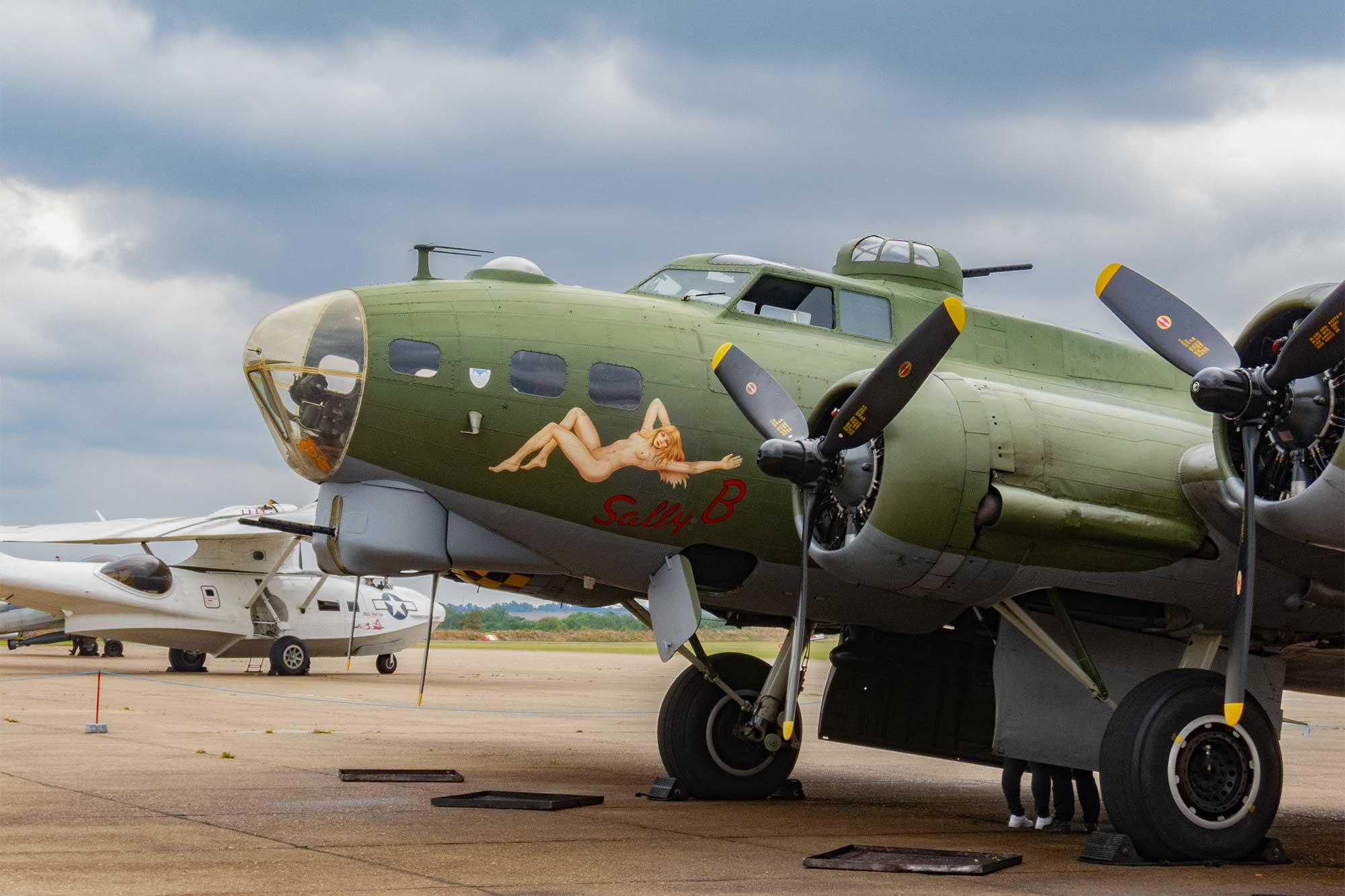
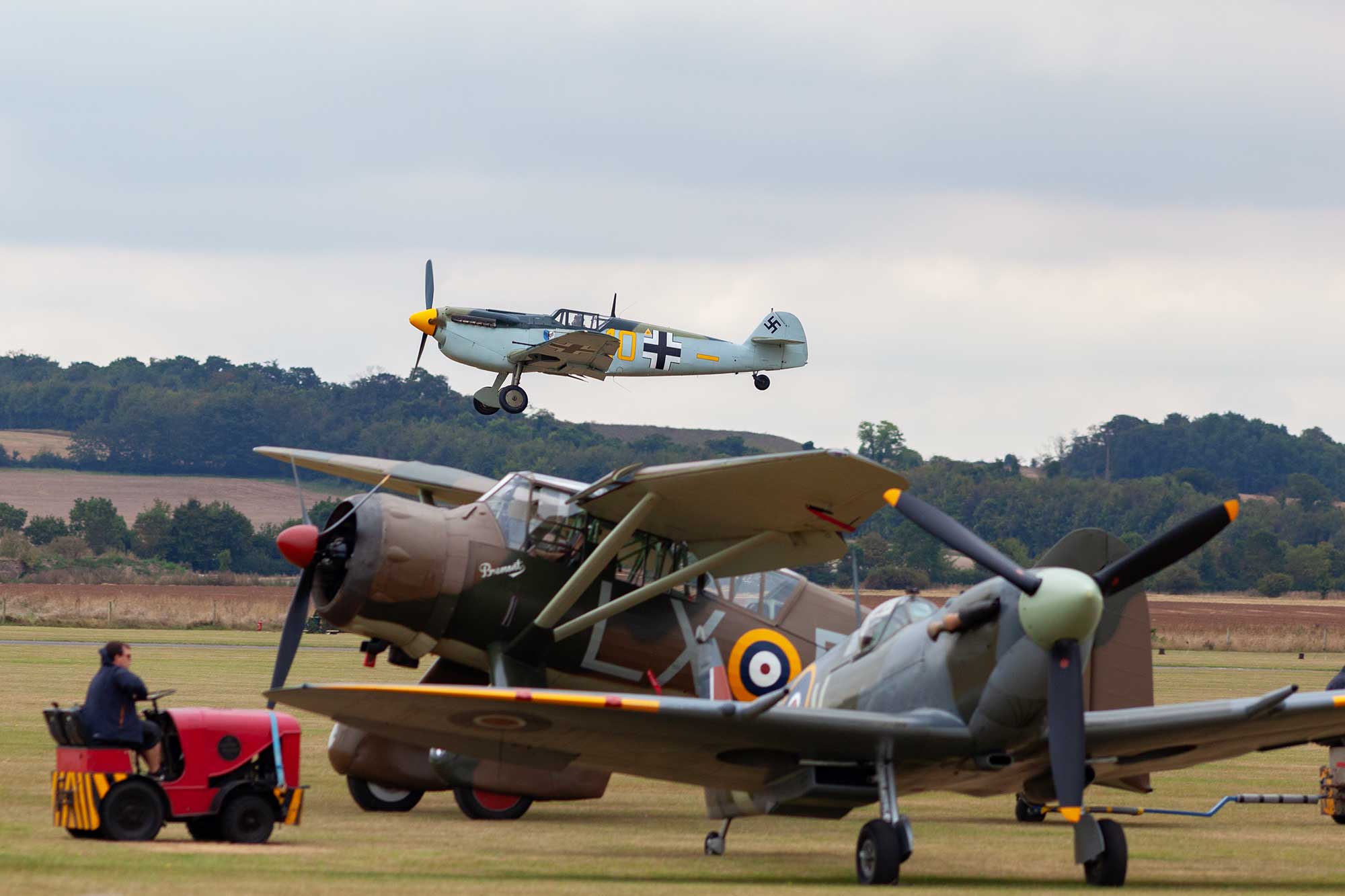
(Photo Above) - flying above the other two planes is a Hispano HA-1112 Buchon.
In essence the Buchon is a Messerschmitt Bf 109 airframe mated with a Rolls-Royce Merlin engine. Buchons were built by Hispano Aviacion and served with the Spanish Air Force until 1965. The Buchon in the photograph was one of the 17 ex-Spanish Air Force Buchons brought over to the United Kingdom in 1968 to take part in the filming of the epic Battle of Britain film. Their strong resemblance to the Messerschmitt Bf 109 means that they often appear in films. They recently featured in the 2017 film Dunkirk.

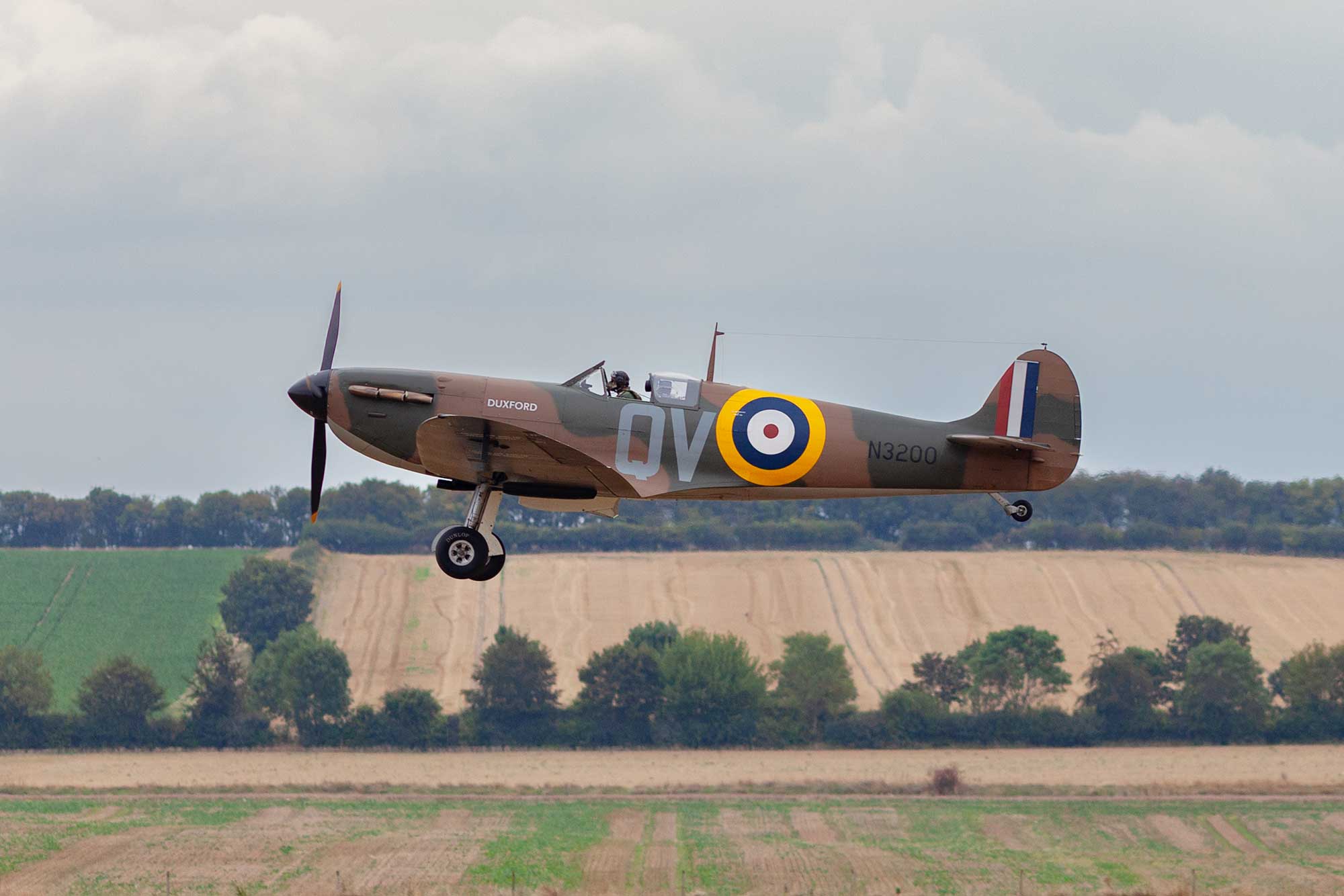
(Photo Above) - This is a Spitfire Mk 1a.
On 27th May 1940 it was flown by Squadron Leader Geoffrey Stephenson in operations to protect the evacuation of the British Expeditionary Force from Dunkirk. The aircraft was hit and Stephenson made the decision to force land his Spitfire on the beach near Sangatte. After a successful landing Stephenson managed to escape but was captured in Brussels a few days later and became a prisoner of war in Colditz Castle.
The wreck of the plane was rapidly covered by the sea and sand and lay forgotten until it was discovered in 1986. It was restored in the United Kingdom and eventually flew again for the first time in 2014.
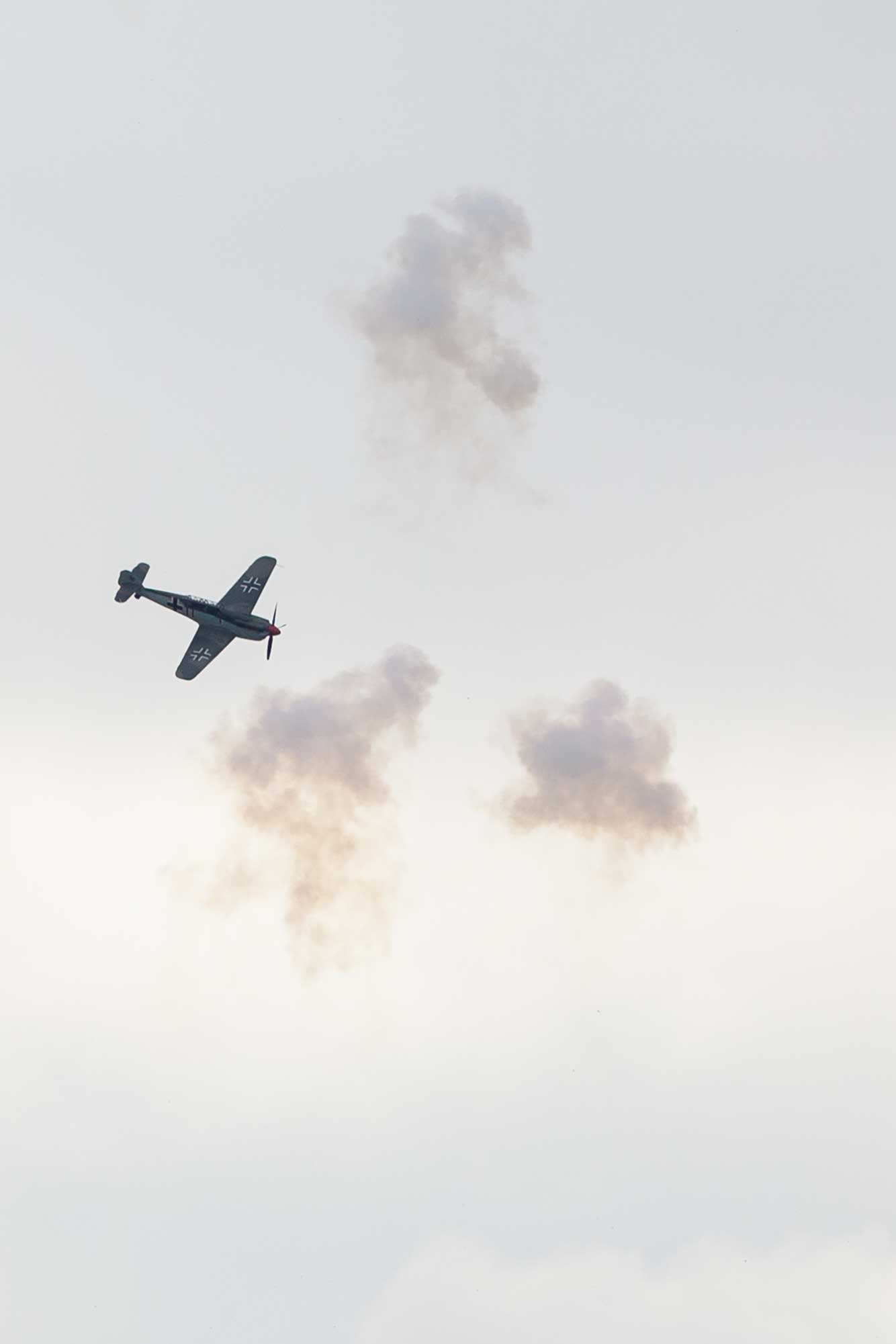
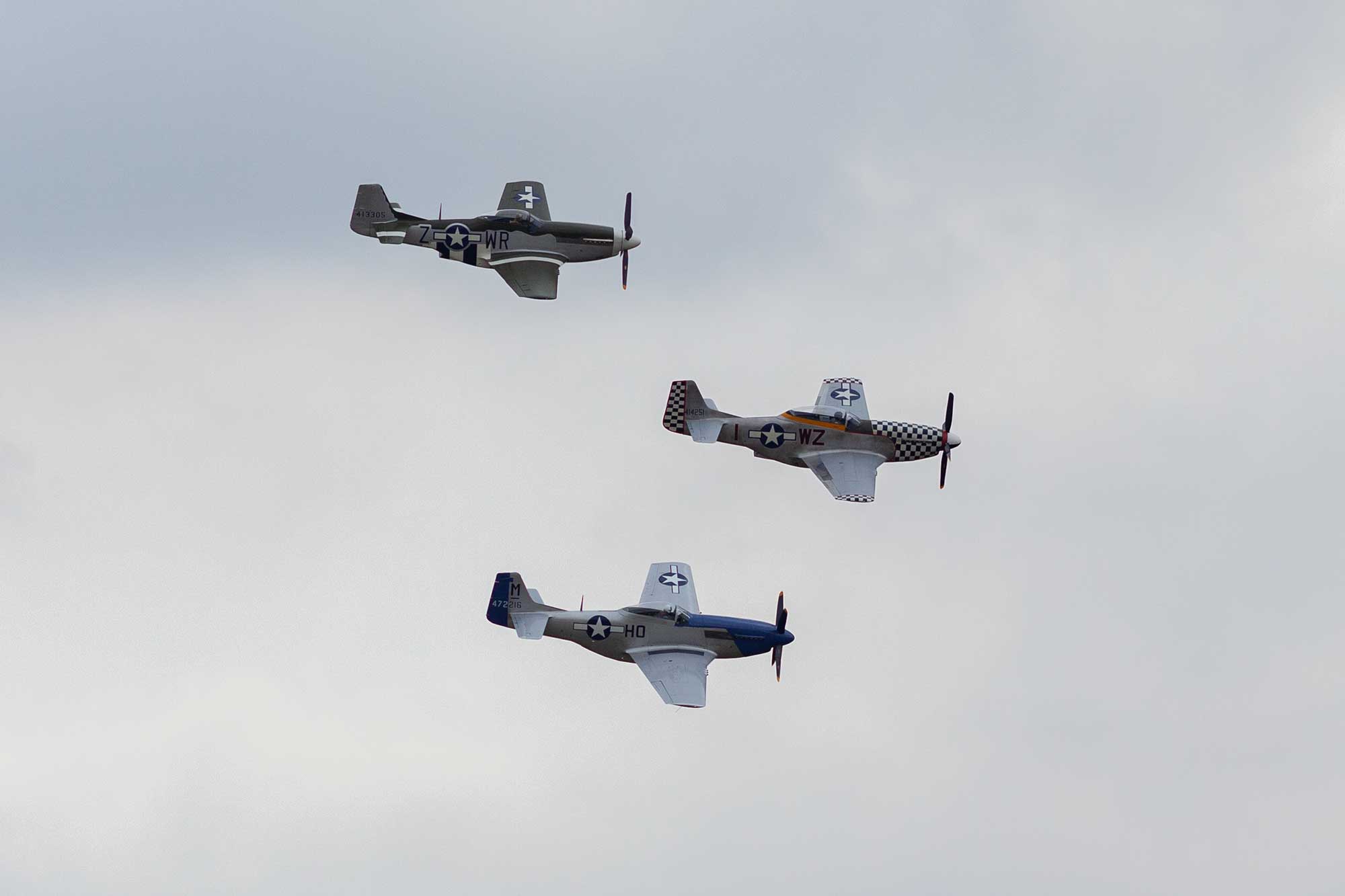
(Photo Above) - The planes at the top and bottom are North American P-51D Mustangs. The middle on is a North American TF-51D Mustang.
The difference is that the TF-51D has been modified to provide a two-seat configuration.
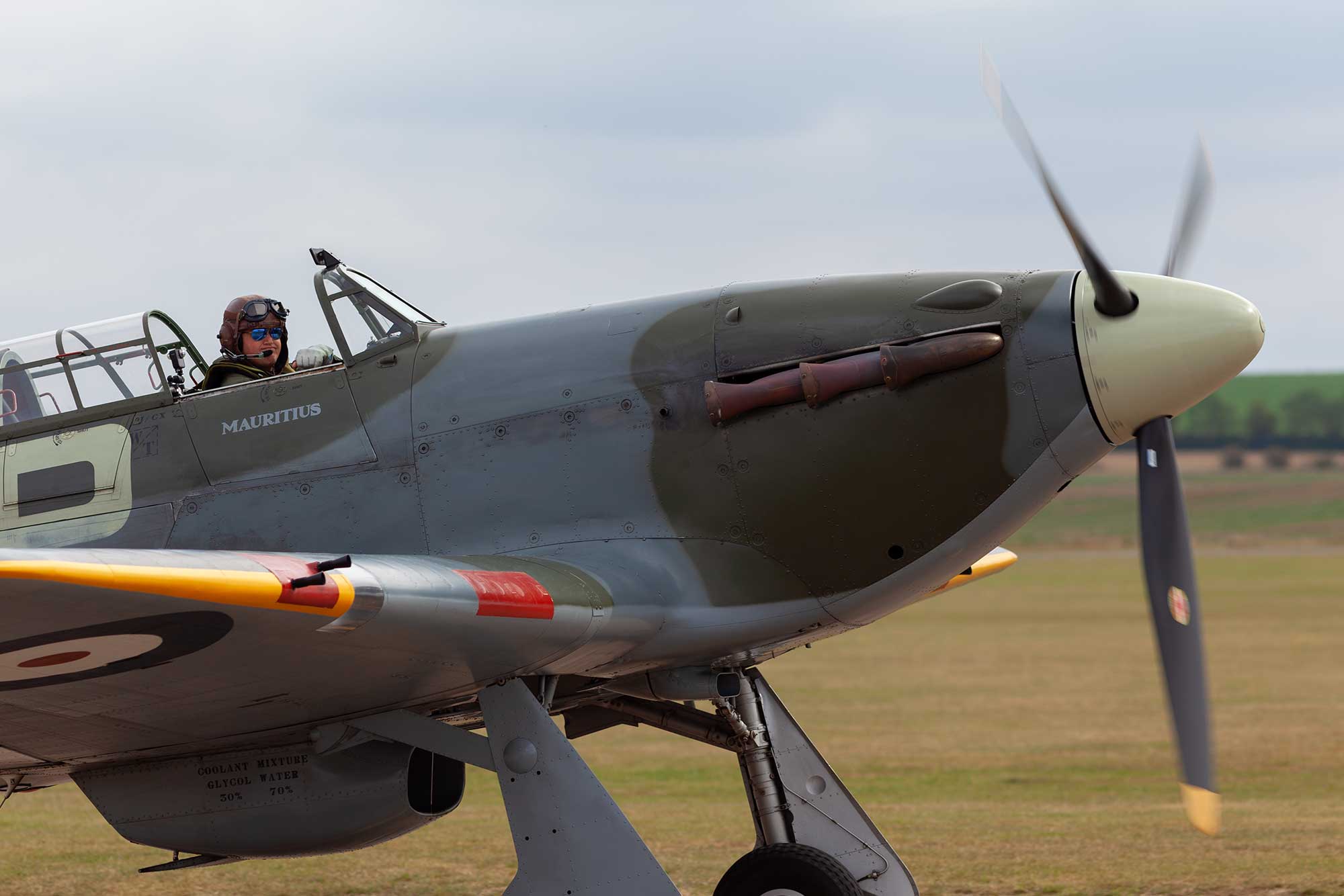
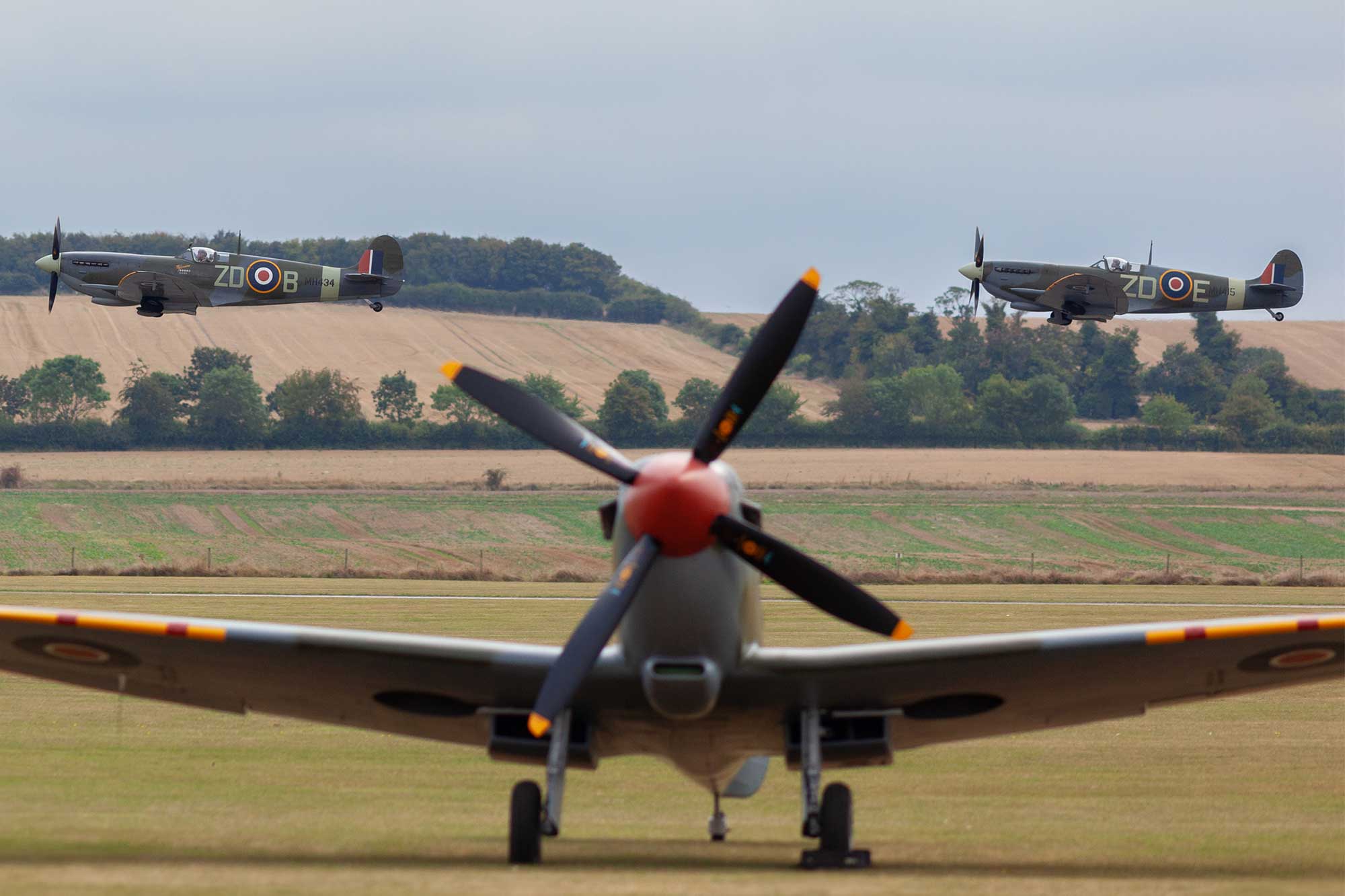

(Photo Above) - This is a Fairey Swordfish Mk1
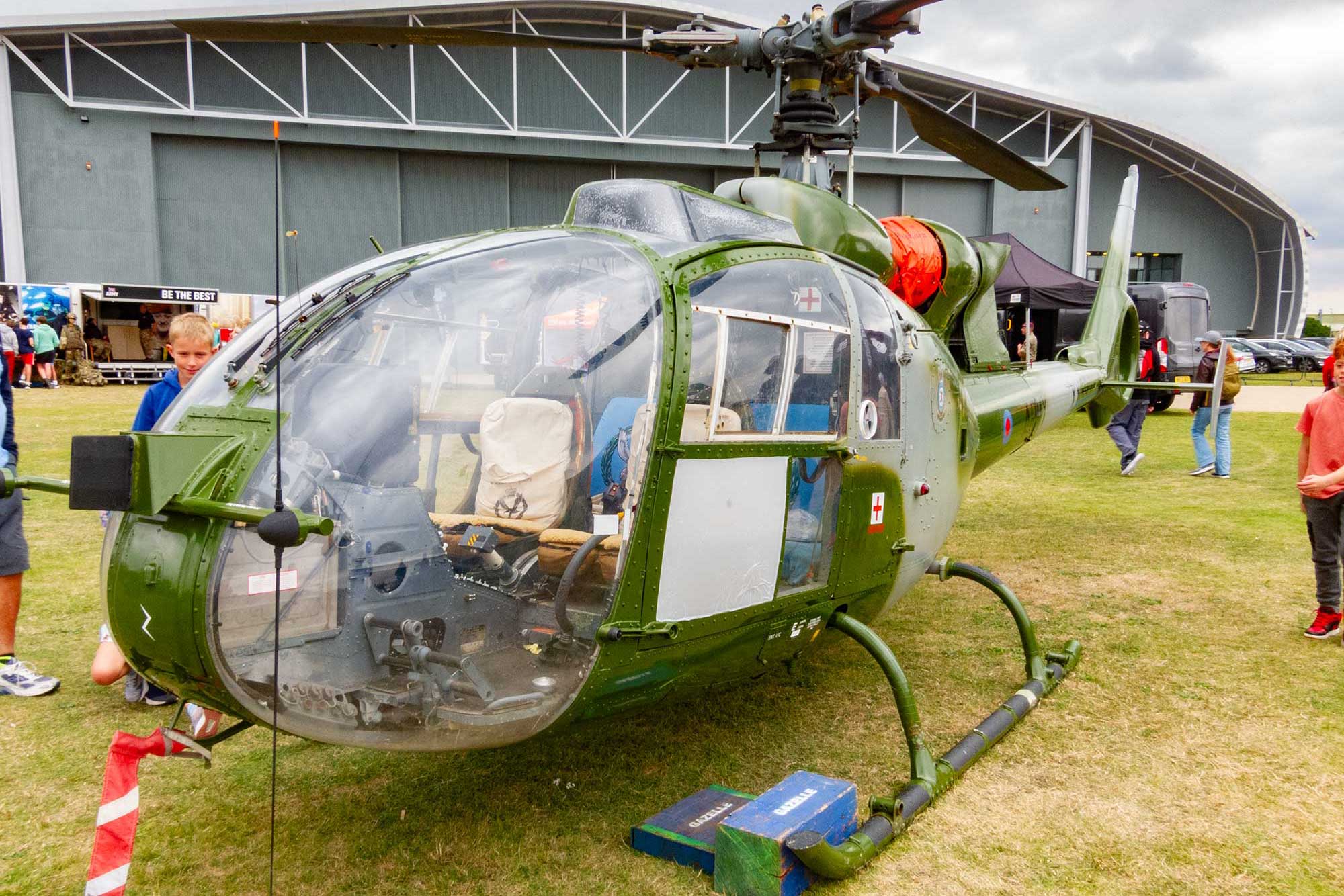
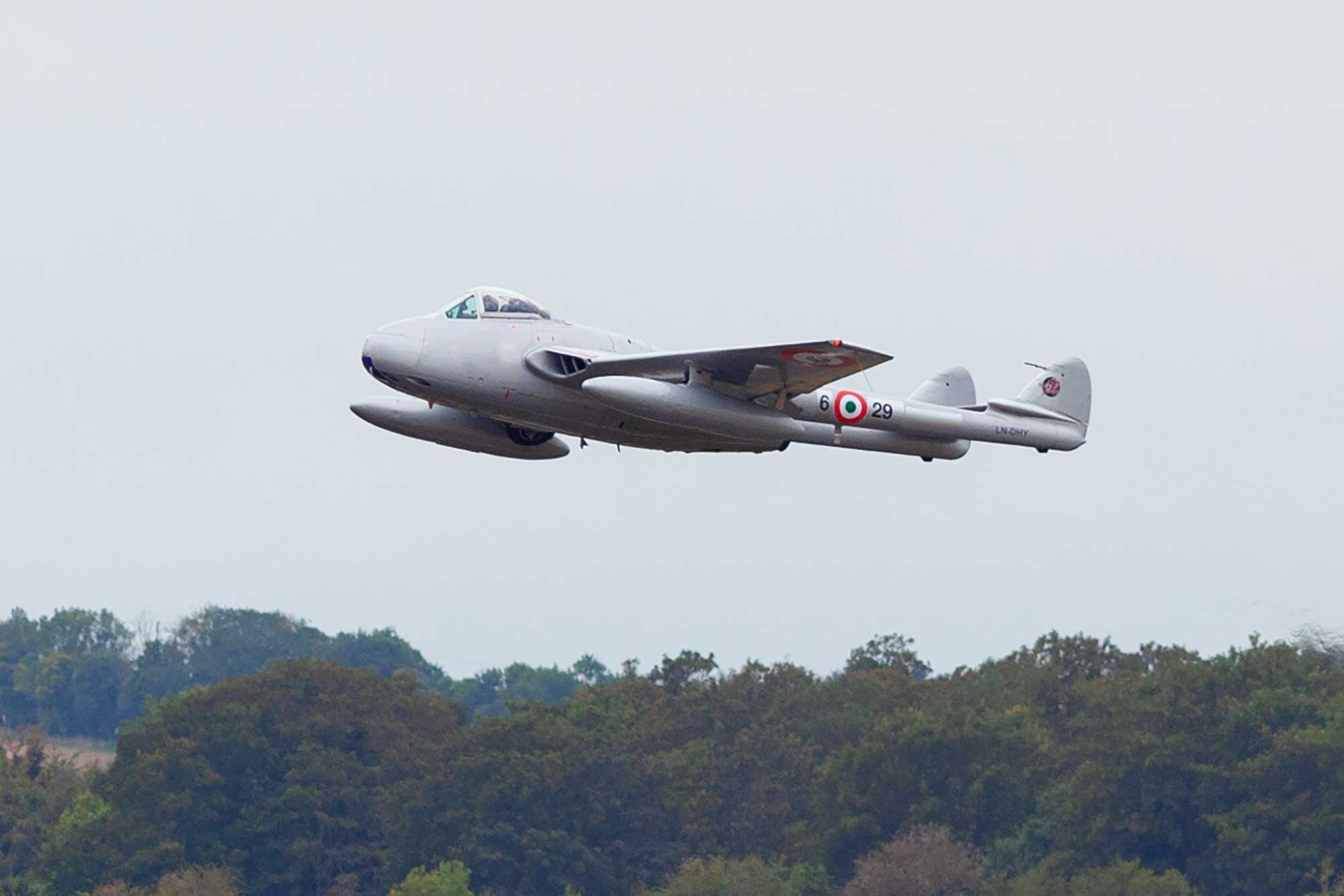
(Photo Above) - This is a de Havilland Vampire FB6.
The Vampire was the second jet fighter to be operated by the RAF, after the Gloster Meteor, and the first to be powered by a single jet engine.
It entered operational service with the RAF in 1946. It was the first jet aircraft to cross the Atlantic Ocean and was also the first RAF fighter with a top speed in excess of 500 mph. Another first was achieved by the de Havilland Vampire on 3rd December 1945 when it became the first pure-jet aircraft to land and take-off from an aircraft carrier.
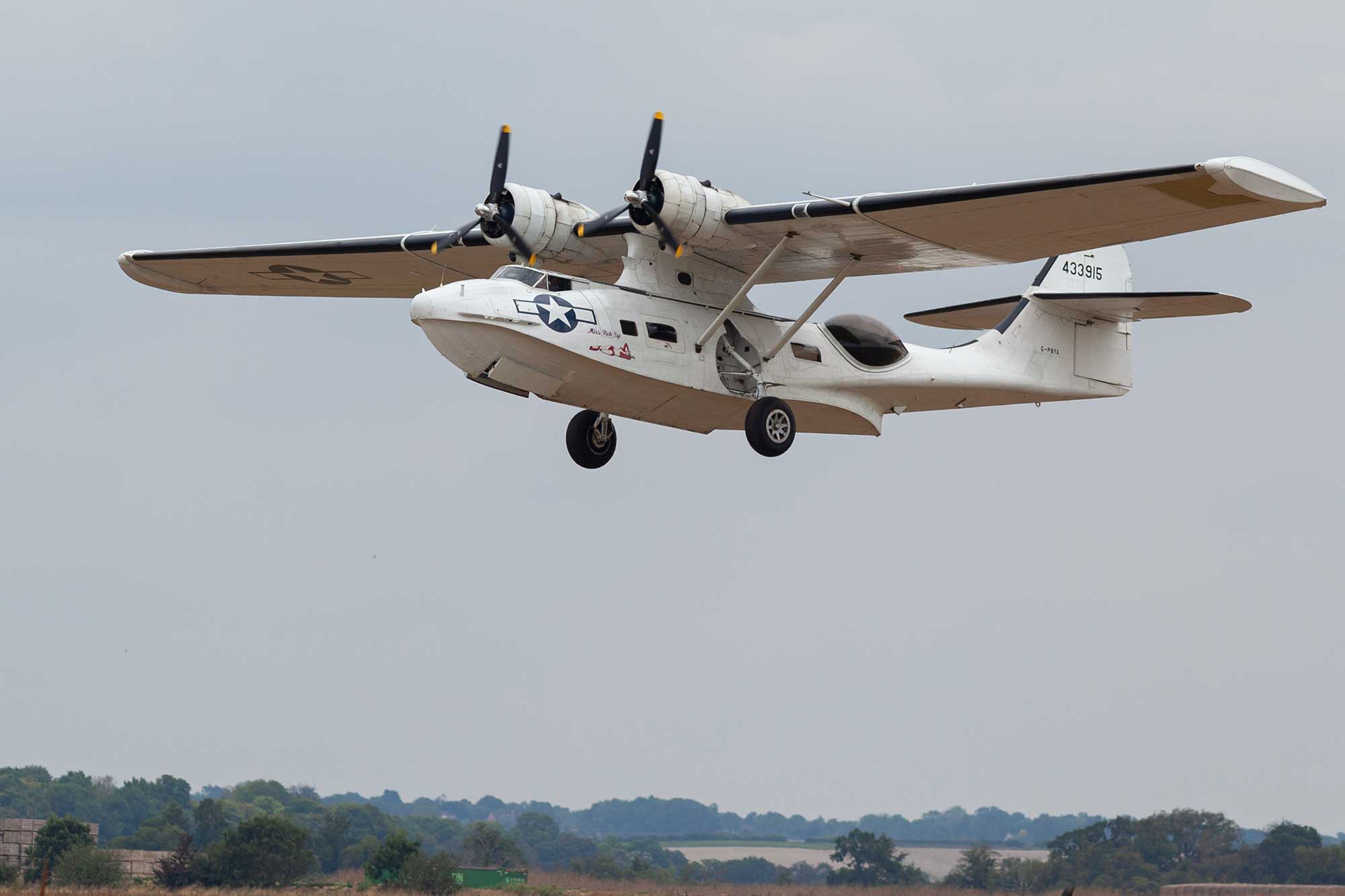
(Photo Above) - The plane pictured here is a Consolidated PBY-5A Catalina.
The Catalina first flew in 1935. Although it was original intended to be a patrol bomber, the Allies actually used Catalinas in a number of different roles including convoy protection, anti-submarine warfare and as an air-sea rescue aircraft. It was extremely reliable was one of the most successful aircraft of its kind ever built.
The Catalina in the photograph is called Miss Pick Up and served with the Royal Canadian Air Force on submarine patrols during the Second World War.